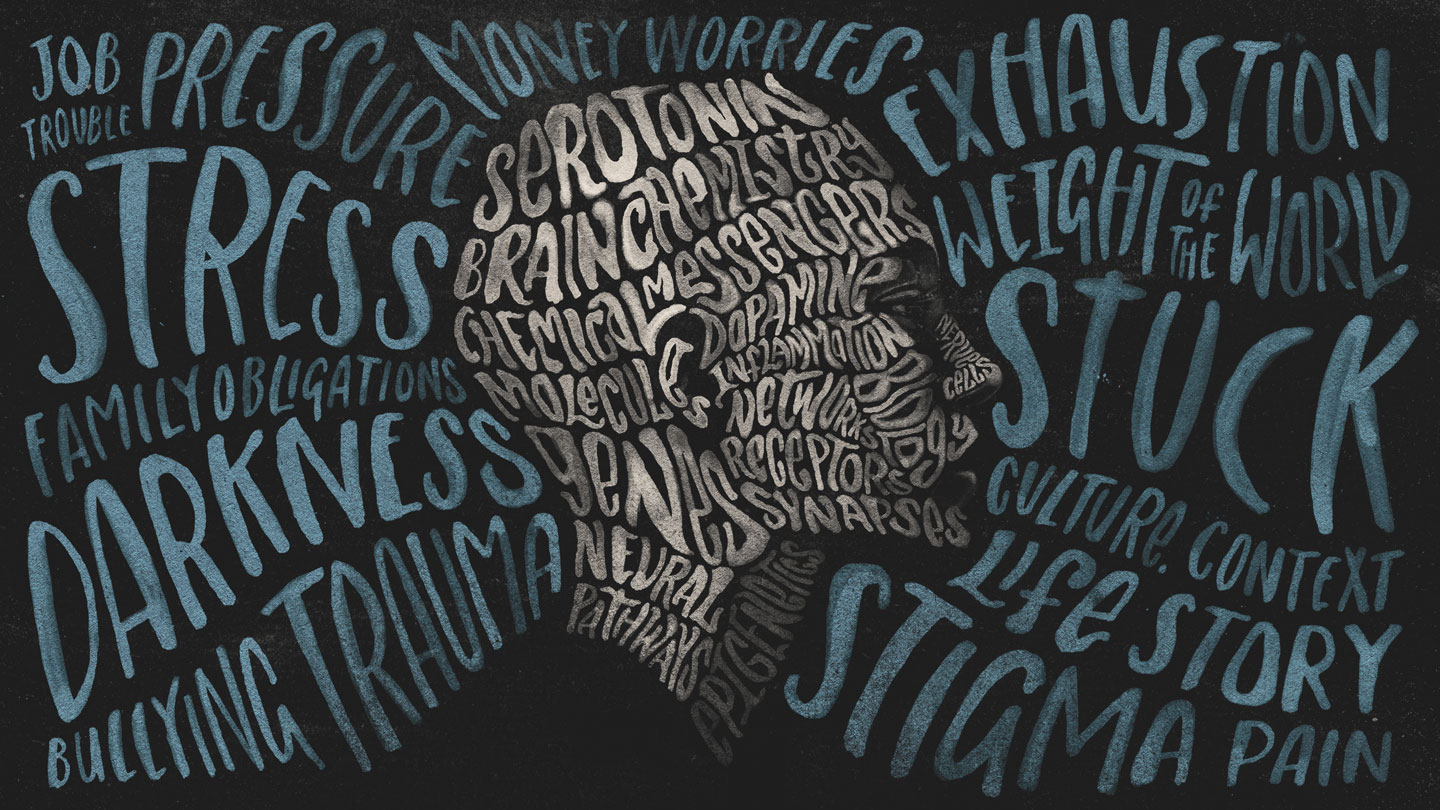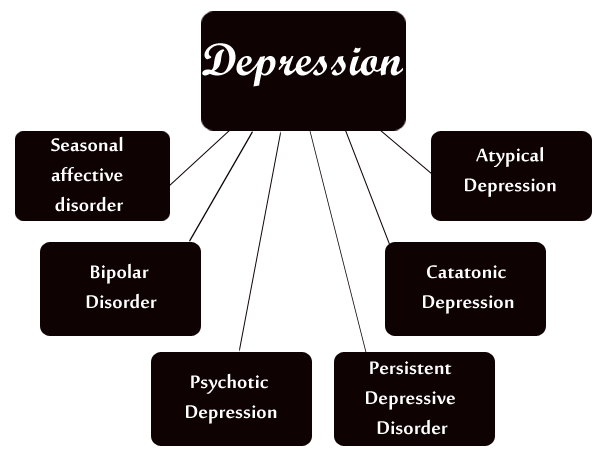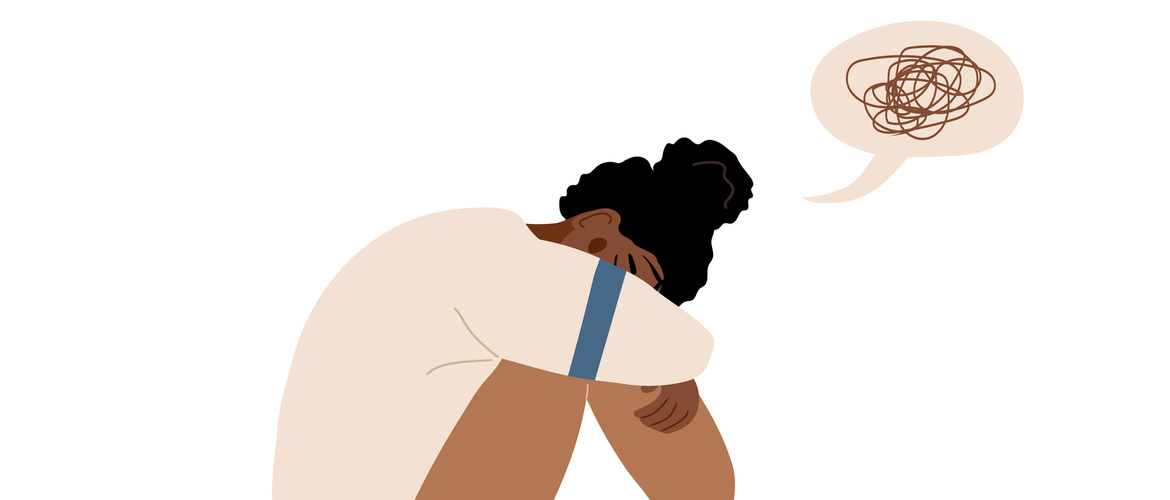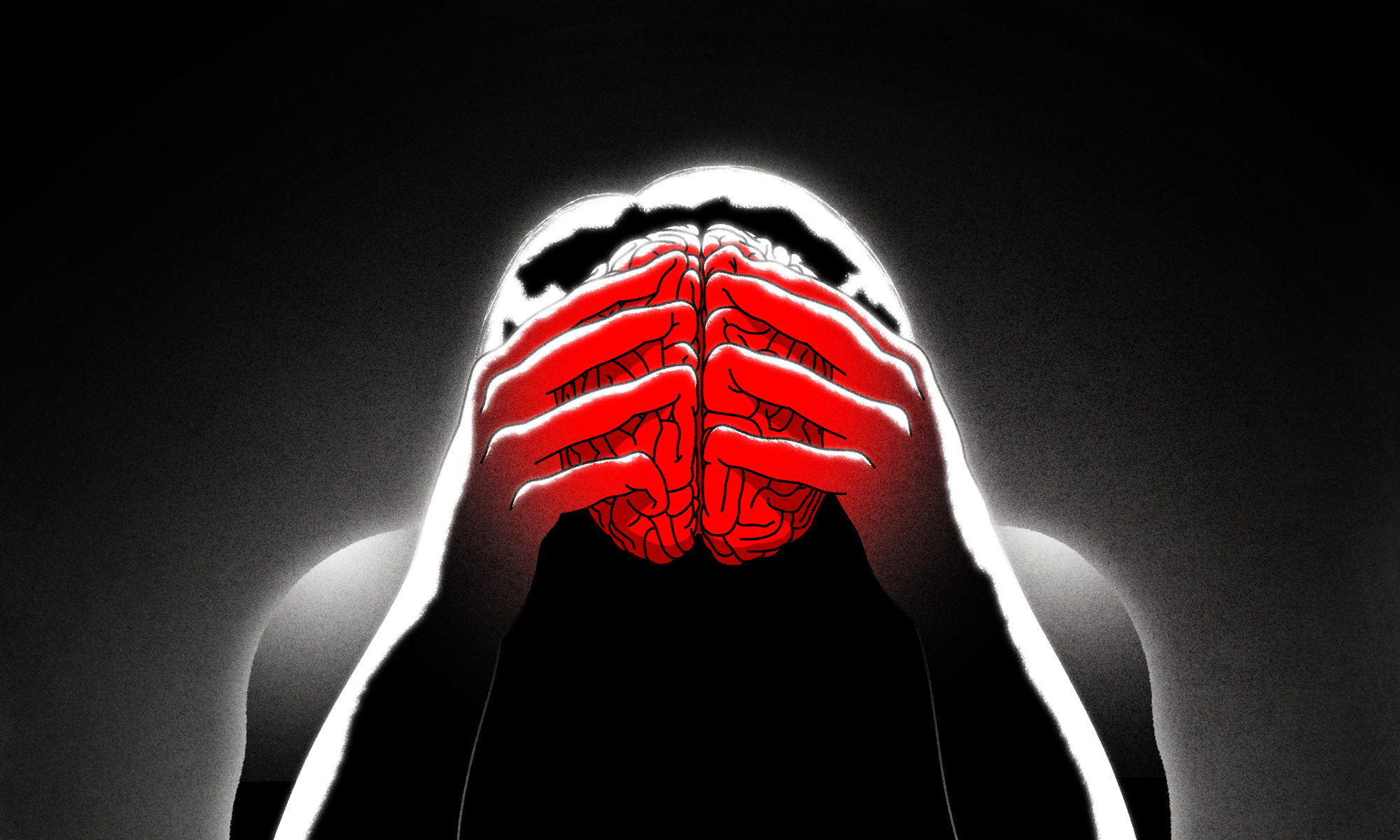
Most people experience low moods sometimes. Stressors such as a loved one's loss, job loss, divorce, and other painful occurrences can leave a person sad, lonely, and terrified.
Individuals diagnosed with depression as a mental condition, on the other hand, experience significantly more severe symptoms of low mood, constant sorrow, and disinterest that last longer. Some may not even know why they feel that way.
It impacts how you feel, think, and behave, which results in numerous emotional and physical difficulties. It may be hard to do daily chores and feel like life is not worth living.
Depression and Anxiety
Researchers have associated decreased serotonin levels with depression and anxiety.
Although depression and anxiety disorders are distinct, people suffering from depression frequently show symptoms comparable to those of anxiety disorders, such as uneasiness, irritability, and difficulties sleeping and focusing.
Many people who suffer from depression have a history of anxiety disorders. There is no proof that one condition causes the other, but there is significant evidence that many people have both.
According to a global survey, 45.7% of people who had a lifetime history of severe depressive illness also had a lifetime history of one or more anxiety disorders.

Root Causes of Depression
Although the actual cause is uncertain, genetic, biochemical, environmental, and psychological variables may contribute to the development of depression. Some risk factors are as follows:
- Biological relations that have suffered from depression;
- Traumatic or stressful events such as physical or sexual abuse, the death of a loved one, or financial difficulties;
- Major life changes, even planned ones;
- Medical conditions like cancer, stroke, or chronic pain;
- Certain drugs (consult your doctor to see if they are making you sad);
- Alcoholic beverages or illegal drugs.

Depression Types
Depression has a few types that differ from each other but share some similarities.
Major depression disorders, or clinical depression, are the most commonly identified types. The affected person showed at least five of the nine frequent symptoms.
- The overpowering sense of despair or a lack of interest and enjoyment in most everyday activities;
- Decrease or increase in desire to eat;
- Sleeplessness;
- Slowed-down or disturbed physical or mental activities;
- Never-ending fatigue;
- Feelings of worthlessness or excessive guilt;
- Frequent thoughts of death and suicidal ideation, with or without specific plans to commit suicide;
- Cognitive difficulties and impaired ability to think, concentrate, and make decisions;
- Undiagnosed physical ailments, such as back pain or headaches;
- Angry outbursts, impatience, or irritation over minor issues.
The symptoms must last for at least two weeks. Major depressive illness influences social, vocational, educational, and other critical functions.

Persistent Depressive Disorder (dysthymia) is another kind of depression in which people have a consistently gloomy, dark, or sad mood that lasts for at least two years (children and adolescents may suffer from irritation, which lasts for at least one year.)
Individuals with persistent depressive disorder must also have two diagnostic symptoms: poor appetite or overeating, insomnia or hypersomnia, low energy or tiredness, low self-worth, poor concentration, struggle making decisions, or feelings of despair. The symptoms are not nearly as severe as those associated with serious depression.
Seasonal Affective Disorder (SAD) is a kind of seasonal depression caused by a lack of sunshine or seasonal fluctuations. SAD is comparable to the "winter blues," but with more severe symptoms. SAD patients have symptoms of Major Depressive Disorder during a specified time of year, generally winter.
Bipolar Disorder, commonly known as manic-depressive disease, is a brain disorder that causes abnormal changes in a person's mood, energy, and ability to operate. From periods of extreme happiness and irritability to chronic sadness and hopelessness, mood episodes can last from days to weeks or longer. It might help to think of bipolar disorder as a mood spectrum. At one extreme is severe depression, followed by moderate depression and mild low mood.
Depressive Disorder due to Medical Problems
Some medical disorders might cause people to have depressive symptoms. These are frequently related to endocrine and reproductive system diseases.
People with low thyroid hormone levels (hypothyroidism) frequently experience fatigue, weight gain, frustration, memory loss, and depression. When we focus on hypothyroidism, sadness is alleviated.
Cushing's syndrome is another hormonal condition characterized by excessive cortisol levels that can also induce depressive symptoms.
Other illnesses that cause depression include HIV/AIDS, cancer, diabetes, strokes, Parkinson's disease, etc.

Adjustment Disorder with Depressed Mood
Here, the depressive symptoms appear within three months after the stressor starts to bother you. The stressor is frequently some form of change in an individual's life that they find stressful.
Sometimes, the stressor is pleasant, such as a new job, marriage, or baby, but it is still stressful for the individual. Symptoms can cause severe distress and impairment in functioning when they are out of proportion to the expected reaction.
When the person begins to manage and adjust to the stressor, or when the stressor disappears, the symptoms usually subside within six months.
Additional assistance during a stressful period is required.
Chronic stress and depression can impact neuroplasticity, affecting the brain's ability to form new connections.
How Depression Shows Up Across Genders and Various Age Groups
- Adult women are more likely to suffer from depression. It manifests as sorrow, worthlessness, and guilt. It frequently presents as restlessness, irritation, and aggression in adult males. They may become more irresponsible and overuse drugs and alcohol. They are also less likely to recognize their sadness and seek treatment.
- Other symptoms in adults are pain, fatigue, lack of appetite, sleep issues, loss of desire for sex, memory problems, or personality changes, irrespective of any medical illness or medicine. Wanting to stay at home rather than go out and socialize or try new things.
- Depression is more likely to emerge in younger children due to school rejection, anxiety while away from parents, and the fear of parents dying. Depressed teens are angry, sulky, and get into mischief at school. They typically suffer from anxiety, food problems, or substance misuse.
- Depression may appear more discreetly in older individuals because they are less reluctant to acknowledge emotions of loss or grief, as well as medical conditions that are more frequent in this age group. Suicidal thoughts or impulses, particularly in elderly males.

When should you see a Doctor?
If you are depressed, schedule an appointment with your doctor or a mental health expert as soon as possible. Talk to a friend or loved one, a health care professional, a religious leader, or someone you trust if you are hesitant to seek therapy.
Conclusion
Depression is more than a bad mood that can "snap out" of. Depression may need long-term therapy. But do not be disheartened. Most people who suffer from depression benefit from medication, counseling, or both.
Frequently Asked Questions (FAQs)
1. What is the pathophysiology of depression?
The pathophysiology of depression refers to the biological and neurochemical changes that occur in the brain and body, contributing to the development of depressive symptoms.
2. How does chronic stress relate to depression pathophysiology?
Chronic stress can lead to dysregulation of the hypothalamic-pituitary-adrenal (HPA) axis, altering cortisol levels and affecting brain regions involved in mood regulation.
3. Can hormonal factors contribute to depression?
Yes, hormonal changes, particularly in estrogen and testosterone levels, may influence mood and contribute to depression, especially in women during certain life stages.
4. Are there gender differences in depression pathophysiology?
Yes, some studies suggest that gender differences may exist in the pathophysiology of depression, with hormonal variations and brain structure contributing to different patterns of depressive symptoms in males and females.
5. What is the impact of chronic pain on depression's pathophysiology?
Chronic pain can worsen depression and vice versa, with overlapping neurobiological pathways influencing both conditions.
Disclaimer: The information and other content provided in this blog, or in any linked materials, are not intended and should not be construed as medical advice, nor is the information a substitute for professional medical expertise or treatment. If you or any other person has a medical concern, you should consult with your healthcare provider.


.png)


